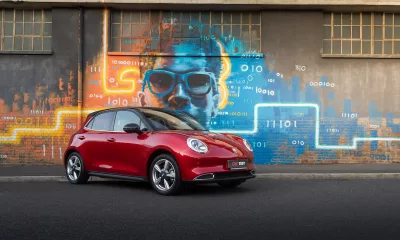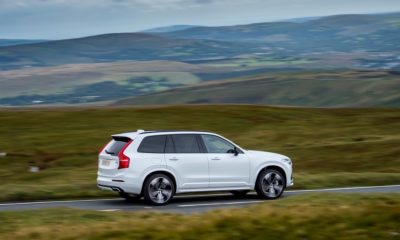APPEALING looks, good build quality, economical engines and generous standard specification – at bargain prices – appears to be the winning recipe followed by the chiefs (or is that chefs?) at Hyundai headquarters these days.
Now in its seventh generation, the Accent is a far cry from the model it replaces. That’s not to say that the previous-generation Accent was bad. In fact, in a 2006 road test, CAR testers remarked that the vehicle was a high-value package, fun to drive and had a “gutsy” powerplant. What counted against it was bland, almost nondescript styling and the fact that it was built by a manufacturer that, aside from the Getz, had not yet made major inroads in the local market. Hyundai has since put much effort into elevating its market position and promoting its new, self-styled “fancy” Accent. But do we fancy it?
It’s perhaps not as pretty as its Elantra sibling, but it does share similar design cues such as the flowing lines that give the fourdoor its coupé-like profile. The nose is bit stubbier than its big brother’s and the front isn’t the most flattering part of the exterior, but the rear is elegant and the chrome-look trim gives it an upmarket appearance. In profile, it is clear that it is quite a large vehicle for the price and is one of the biggest contenders in its segment.
Moving inside, the cabin features high-quality materials that arguably can’t be matched by many competitors at this price level. A few testers noted that the layout of the facia and the various controls are clean and uncluttered, with everything within reach of both driver and front passenger. A lot of thought was clearly put into making the interior feel classier than its price may suggest. The silver finishes and piano-black inserts lift the ambience despite the fact that it is quite dark. It features hard plastics on most surfaces and taller occupants may feel a bit cramped.
The cloth-covered driver’s seat features height adjustment, which helps in finding the ideal driving position even without the option of reach adjustment on the steering column. The seats are comfortable but could do with more bolstering, while rear-seat passengers may feel that they lack sufficient headroom as a result of the sloping roofline.
Where the generous exterior dimensions come into play is in the luggage compartment. Like the Elantra, the boot has a classleading capacity even with a full size spare wheel in place. There is 392 dm3 on offer that increases to 992 dm3 when the rear seatback is folded flat.
An appealing appearance and nifty space utilisation are all good and well, but they mean nothing if the experts in the engine and technical departments aren’t able to realise performance that will do justice to the design department’s achievements.
What these guys have thrown into the mix is Hyundai’s 1,6-litre Gamma powerplant mated with a five-speed manual transmission. This multi-point fuel-injected unit pushes out 91 kW and 156 N.m of torque, and is frugal: CAR recorded a fuel-run figure of 6,6 litres/ 100 km, which betters our fuel index of 7,32 litres/100 km.
Although the engine has a free-revving nature, it tends to get quite loud at highway speeds and a degree of buzzing can permeate the cabin.
Vehicles such as the Accent are not bought for their strong performance capability but, for the sake of record, our test car managed to complete the zero to 100 km/h dash in a brisk 10,4 seconds and is capable of making swift overtaking manoeuvres. In third gear, it accelerated from 100 to 120 km/h in 3,93 seconds. Braking times, however, were disappointing; the Accent managed a mean stopping time of 3,38 seconds, giving it an average rating by our standards.
As far as the transmission is concerned, testers were impressed with the smooth gear shift, but some noted that there was little feel in the clutch and that it had too much travel.
The suspension setup of Mac-Pherson struts up front with a torsion beam at the rear makes for a compliant ride that’s capable of adeptly isolating passengers from uneven road surfaces beneath. The only time the vehicle seemed unsettled was over some rough patches where it felt a bit jittery and in extreme cornering, where the rear became disconcertingly light.
Perhaps the Accent’s only serious failing, however, is the appalling steering action. Hyundai’s electrically assisted rack-and-pinion setup does not work well on this vehicle and some testers remarked that, “The vehicle felt as though it was steering itself.” Even while travelling in a straight line, the Accent felt as though it was fighting against steering inputs – almost as if it wanted to go in a slightly different direction. It had a wayward effect on the car’s behaviour at highway speeds and spoiled their otherwise great impressions for many testers.
But back to the positives. It is the garnish, and this rings true for many new Hyundais, that makes the Accent so appealing as a purchase proposition. There are airconditioning, electric windows all around, a trip computer and an MP3-compatible audio system with Bluetooth functionality and auxiliary and USB-input sockets. On top of these, Hyundai adds steering-wheel-mounted controls for the audio system, rear park assist, front fog lamps and heated mirrors.
For safety and peace of mind, Hyundai has given its Accent driver and passenger airbags, central locking, Isofix child seat anchorages at the rear and a comprehensive warranty and service plan.
TEST SUMMARY
Hyundai continues to shake up the market by launching well-specced, competitively priced vehicles in an increasing number of segments. With an extensive list of standard features, good fuel economy, generous boot space and stylish looks, the new Accent could very well be the best saloon in its class by virtue of offering excellent value-for-money. Driving satisfaction may not be its strong suit, but we don’t think potential buyers will be too perturbed by that.










